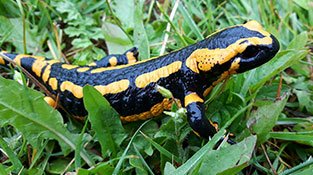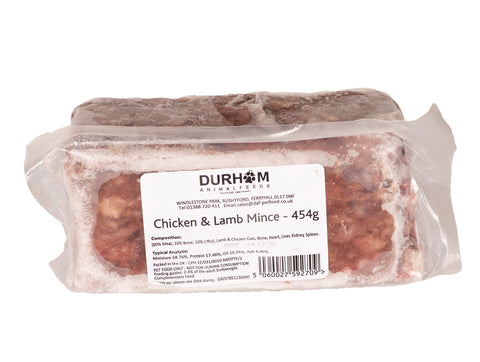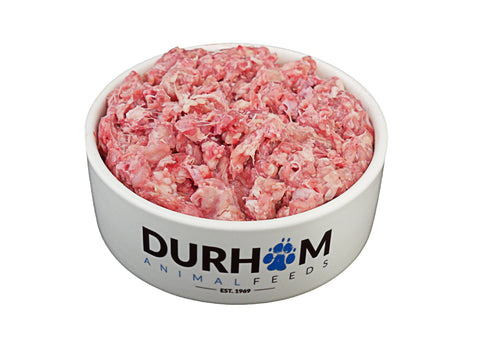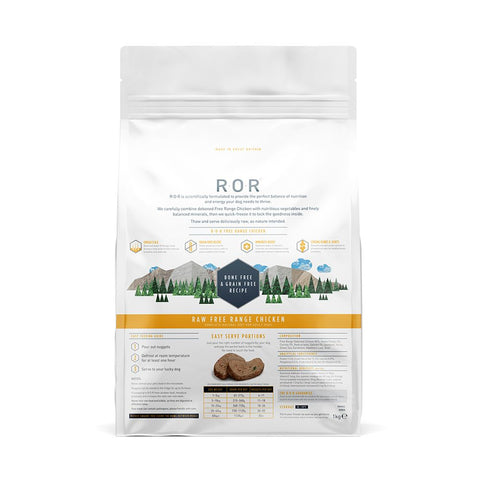Salamander And Newt Care Sheet

Shopping List
Aquarium or vivarium
with tight fitting lid
Appropriate substrate
Food
Heat pad, lamp
or water heater (most species)
Food dish (non-aquatic species)
Thermostat
Water Dish
Rocks
Book that covers Salamander/Newt care
Salamander and Newts are amphibians. They are collectively referred to as caudates. There is a variety to choose from, some are beautifully coloured. For part of the year newts live in water and part on land. The majority of Salamanders, live on land. They resemble lizards in appearance but have smooth moist skin with no scales, claws or external ear openings. Their moist skin requires them to live in or near water or on moist ground. They are mainly carnivorous or insectiverous and are usually nocturnal.
Choosing and buying Salamander or Newt
There are approximately 500 known species. The most commonly kept species in captivity are: Aquatic-Axolotls. Semi aquatic- Fire-bellied Newts and Terrestrial & Fire Salamanders.
A healthy Salamander or Newt should be:
- Full bodied
- No scars or wounds on the skin or nose
- Bright and alert
Housing
The type of accommodation will depend on the natural habitat of the species you want to keep. For terrestrial types a glass viviarium is ideal or aquarium for aquatic/semi-aquatic species, either can be adapted to the species needs.
Aquatic species (similar to setting up an aquarium for fish)
Fill the aquarium with de-chlorinated water or better still rainwater. Cover the bottom with washed gravel and/or aquarium sand. Plants can be used to good effect. It is advisable to add a water filter to preserve water quality and to provide a degree of oxygenation to the water. The water quality should be tested regularly.
Terrestrial species
Cover the bottom of the aquarium with washed gravel and top with a layer of clean aquatic potting compost and add unfertilised peat or coir and cover with moss. Add pieces of bark and rocks to create hiding places. Most species of salamander or newt require humidity. Your pet shop will advise depending on the species you wish to keep.
Semi aquatic
Adapt the aquarium by adding a sheet of glass in the middle. Fix with silicon sealant designed for aquariums and set up one half as aquatic and the other as terrestrial. Or simply create a gradient.
Heating
Salamanders and Newts are cold blooded and need an external heat source to maintain their body temperature. Only one end of the vivarium should be heated. This creates a thermal gradient allowing the animal to choose its preferred temperature. Thermometers can be placed at each end of this thermal gradient to monitor the temperature range available. The temperature of the heat gradient can be controlled by a thermostat. It is advisable to reduce the temperature at night.
The temperature range will depend on the species kept but most thrive at temperatures in the range 14-20 degrees centigrade The heat source will depend on the type of accommodation. Aquatic ñ aquarium heaters or terrestrial- heat pads or dull heat emitters.
Lighting
Although most Salamanders and Newts are nocturnal, light is needed to regulate their biological clocks. If not positioned in a naturally light location, artificial light can be provided by florescent tubes and set on a timer and may provide a little additional heat.
Hibernation
Lowered temperatures (except for tropical species) in winter are necessary if breeding is to be attempted, but hibernation is not essential to the health of the animals. Your pet shop will be able to offer advise.
Feeding and Water
Food variety is important, most will take invertebrates such as earthworms, daphnia, tubifex and whiteworms. These are the most convenient foods in captivity. They can simply be left in the container for the newts and salamanders to find, except in the case of earthworms which will burrow and be impossible for the animals to find and should be fed while being ob-served. Mealworms can be given as a treat.
In an aquarium strips of lean meat or worms can be chopped up and fed to newts. The pieces are found by smell. On land they usually ignore prey which does not move. Some species, notably the Japanese Newt and Tiger Salamander, can be fed pieces of liver and other meats. Some newts will also eat the freeze-dried foods prepared for fish.
All uneaten food, dead or alive, must be removed if not eaten within a few hours. Most species are nocturnal, so food is best left in the cage at least overnight. They will quickly get used to the sight of uneaten insects etc. moving around them. They will ignore them, no longer recognising them as potential food. Terrestrial species will require fresh de-chlorinated water or rainwater supplied in a shallow dish.
Handling
Handle your salamander or newt as little as possible, if you do need to handle either use wet hands or catch in a net.
General care
Most problems with salamanders and newts are caused by nutritional deficiencies having been fed inappropriate or unvaried diets. Salamanders and Newts are susceptible to wounds, these can become easily infected, especially if the accommodation has not been kept clean. Fungal infections can be a problem and can often be fatal.










